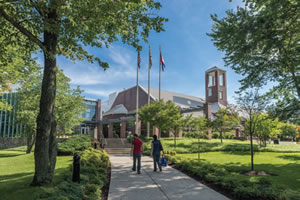Chiller Plant Optimization Saves Energy

The Institute for Bioscience and Biotechnology Research
on the University of Maryland campus cut energy use an
average of 30 percent by optimizing its chiller plant.
When the University
of Maryland committed to
reducing its energy consumption
20 percent by 2020, James Johnson,
director of facilities and lab services, had to
find a way to make the 110,000-square-foot
Institute for Bioscience and Biotechnology
Research (IBBR) more efficient.
The biggest target was the facility’s environmental
stabilization plant, “as big an energy
pig as there was out there,” says Johnson.
The plant was only five years old and had few
operational issues, but a consultation with
Optimum Energy engineers revealed that
optimizing each piece of HVAC equipment individually,
as part of the whole system, could
increase efficiency considerably.
Johnson also wanted to improve reliability
and redundancy. IBBR connects top
scientists in interrelated fields to perform
world-class bioscience and biotechnology
research that leads to real-world advances,
and anything that stabilizes lab environments
furthers the mission. Plus, Johnson
had to ensure the facility’s two 450-ton,
variable-speed electric centrifugal water
chillers — which provide 3,800 hours of
cooling annually — would work at optimal
levels regardless of outside conditions,
from icy winters to steamy summers.
To accomplish these goals, IBBR converted
to an all-variable flow plant, with
Optimum Energy’s OptiCx™ Platform as
the optimization and control layer. OptimumLOOP
™ software calculates the most
efficient operation of the chilled water system
and optimizes plant performance in
real time, dynamically adapting to changes
in load, weather and occupancy to yield the
lowest possible kW/ton while maintaining
the optimal temperature.
In the first year, output almost
doubled — yet IBBR cut energy use by an
average of 30 percent.
“Prior to optimizing, in 2014, the plant
baseline was about 0.9 kW/ton. By the end
of 2015, it was 0.57–0.65 kW/ton,” Johnson
says. “I’ve got a plant that is running at
absolute maximum efficiency.”
optimumenergyco.com